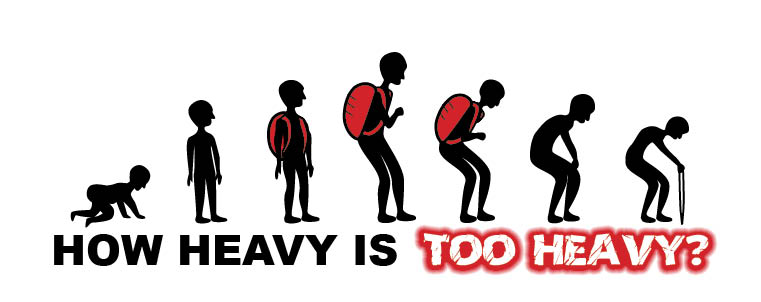Lauren O’Malley, Reporter
@lomalleycourant
Think about how much your backpack weighs. Though one may think the feeling of carrying what seems like the weight of the world is being carried on one’s shoulders is normal, it’s not. One might not worry about the colossal amount of pressure it puts on the spine but, it is becoming a serious concern throughout the school.
Freshman Serena Platt is one of the many who struggle with back pain. “My back is significantly worse. Especially in my shoulders and my back, it begins to hurt a lot towards the end of the day when I’ve been lugging books and binders around,” she said. “I’ve switched to just folders and trying to transfer as much material as possible online so there’s less for me to carry,” she said. “I used to have one textbook in my backpack and two binders and several folders.”
Emmy Eason says that backpacks only add to the pain she already feels in her back. “I feel pressure in my shoulders and lower back when I have my backpack on that lasts all day,” Emmy said.

New Canaan chiropractor Dr. Kimberley Krug said that in a study done, one in four students report having back pain due to backpacks 10 to 15 days or more during the school year.
Experts say that a backpack is only supposed to be about 10 to 15 percent of a person’s body weight. A study done by the Department of Orthopaedic Surgery at the University of California scanned the backs of children aged 11-to-13 carrying backpacks. The study found approximately 10, 20, and 30 percent of their body weight.
“Heavy backpacks create poor posture in students. They create pressure on the spine and the disks,” said Dr. Krug. “Kids, when they’re carrying a heavy backpack, tend to hunch forward so that they create this forward head lean which makes their neck stick out somewhat like a turtle and then their head has to look up creating this strain on the neck.”
Students also feel the need to carry heavy supplies to different classes constantly with little relief. At first, the supplies for each class may not weigh much by itself but, the amount starts to add up over time causing a strain on the back. “I think that I carry a lot more school supplies than the average person. I have a binder for each class, my laptop, phone, and other supplies that I carry every day,” freshman Elise Laviola said.
There are many ways to reduce the pain of a heavy backpack. “By teaching them about posture and trying to undo the damage they do during the day by carrying the heavy backpack and looking down at their phone and computer,” Dr. Krug said. “I try to teach them good habits and good exercises and stretches to reverse that sort of damage.”
Lockers can be the solution to these problems but, students prefer to use their backpacks. “There is not enough time between classes so if my locker’s not in a convenient spot, it’s not worth it,” Serena said.
Nevertheless, there are other alternatives that can be beneficial to students. “There is the rolling backpack but no one seems to want to carry that but, there’s also just making sure that you’re trying to lighten your load as much as possible every day,” Dr. Krug said.
While using lockers would help alleviate back pain, Dr. Krug acknowledges that there isn’t enough time in the day to get to the lockers and class on time. “Make sure you use both shoulder straps and you’re not holding it on one shoulder which could cause a curvature in the spine. Make sure the straps are wider and padded and making sure the backpack is not hanging down too far on your back. It should be up higher, no lower than your waist.”




